Silence (8) - Mai Văn Phấn. Explication par Dr. Ramesh Chandra Mukhopadhyaya. Traduction française Dominique de Miscault
Mai Văn Phấn
Explication par Dr. Ramesh Chandra Mukhopadhyaya
Traduction française Dominique de Miscault
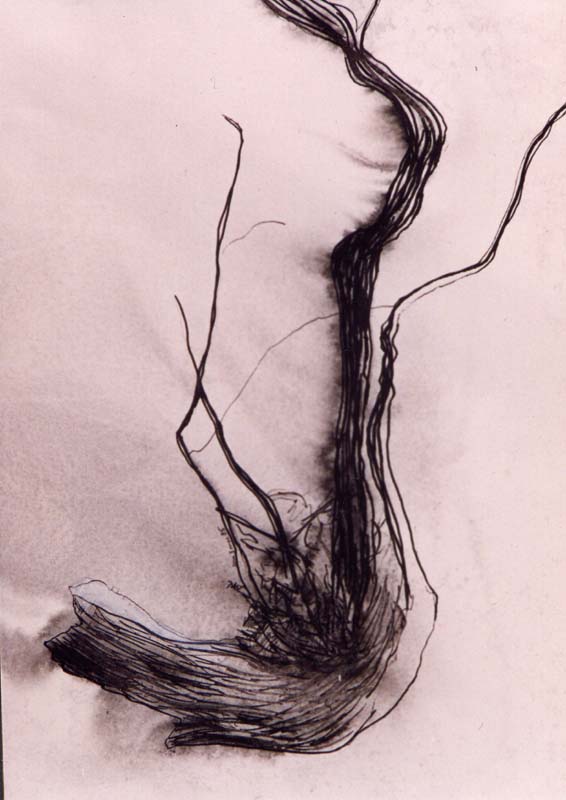
Tác phẩm của Nghệ sỹ Dominique de Miscault. Racines et rameaux - 1 encre - 1982
Silence
8.
Appels de l’oiseau,
rêves,
la pluie tombe, verticales
Une voix de tristesses, baisers ...
horizontales
Aux intersections
des éclats de lumière
montrent le
chemin parfois
aveuglent
d'autres fois
Je
m'installe
traçant d’autres
lignes.
Explication
Ce sont les chants d'oiseaux qui ouvrent la reflexion. Ces chants sont
très proches de notre communication non verbale : cris, soupirs et rires. Les cris
d’oiseaux indiquent l'époque de leur apparition. Ils donnent une langue à l'atmosphère
du moment. L'oiseau nous rappelle le barde ou le poète Mai Văn Phấn. Ce poème
est plutôt un appel d'oiseau, un mantra différent du langage humain. La langue
humaine est l'utilisation symbolique du son partagé par les personnes d'une même
culture. Mais quand une personne a des expériences spirituelles, elles se
manifestent par un langage specifique. C’est une langue non verbale qui s’apparente
aux chants des oiseaux, qui exprime simplement l'atmosphère du moment. Quelque
chose comme un mantra ou un chant mystique qui ne parle ni du passé ni de
l'avenir, mais du présent. L'oiseau est l'être qui nous apporte les nouvelles
du ciel ou du néant. Ainsi, l'appel des oiseaux crée une forte sereinité, il
transforme le monde contingent en un monde idéal. Ici, la vue et le son de la
goutte d'eau qui tombe, sont décrits. Les gouttes d'eau représentent la sagesse
supérieure qui inondent le monde. Les gouttes d'eau comme elixir de vie,
permettant au temps d’advenir. Le présent tombe dans un passé poétique. Le
processus se poursuit.
Les oiseaux appellent, les rêves et les gouttes d'eau commencent à
dessiner. Le poète auréolé de lumière et d'obscurité se mit à dessiner. C'était
l'heure où la lumière et l'obscurité se mêlent. Quand les contraires se mêlent,
il y a une explosion d'énergie. Enveloppé de cette nouvelle énergie, Mai Văn
Phấn se met à dessiner. Mais il ne s'inspire pas de lui-même, les oiseaux chantent,
les rêves et les gouttes d'eau arrachent la plume du poète pour l’attirer à leur
puissance nue et pénétrante.
À quoi ressemble le dessin ? Des lignes verticales et des lignes
horizontales. Les lignes horizontales représenteraient-elles l'espace et les
lignes verticales, le temps ? Cela brille lorsque deux lignes se croisent, où le
temps et l'espace se croisent. L'art se manifeste dans le temps et précisement l'art
visuel se manifeste dans l'espace. Mais le poète crée quelque chose qui peut
être vu comme entendu. C'est un dessin qui n'est jamais sur la mer ou la terre.
Ici, la poésie est spatiale et la peinture suggère le temps. Poésie et peinture
en un. L'espace se mêle au temps et génère une grande énergie qui se manifeste
par des étincelles. Mai Văn Phấn voit ces étincelles dans son monde intérieur. Elles
lui montrent le chemin dans son cheminement vers l'intérieur. Mais parfois, elles
éblouissent les yeux des poètes. Ce sont les visions que le poète éprouve dans
son périple vers l'intérieur.
Le poète écarte les lignes de façon à ce que les rectangles
deviennent plus grands. Le monde pourra ensuite être plus lisible.
Dominique de Miscault:
Artiste Plasticienne. De plages en pages qui se tournent. C’était hier, de 1967 à 1980, mais aussi avant hier, dominiquedemiscault.com. puis de 1981 à 1992. Et encore de 1992 à 2012 bien au delà des frontières. Aujourd’hui, la plage est blanche sous le bleu du soleil.
(http://www.dominiquedemiscault.fr)
Silence (8) by Mai Văn Phấn
Explicated by Dr. Ramesh Chandra Mukhopadhyaya
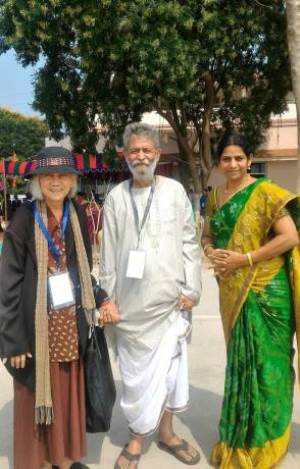
Từ trái sang: GS. Pornpen Hantrakool (Thái Lan), TS. Ramesh Chandra Mukhopadhyaya, TS. Nagasuseela Panchumarthi (Ấn Độ)
Silence
8.
Bird calls, a dream, falling drops of water…
Draw vertical lines
A voice, sadness, kisses…
Draw horizontal lines
The intersecting lines
Are sparkles of light
Which show you the way sometimes
And blind you other times
I settle down
To pull the lines further apart.
(Translated from Vietnamese by Nhat-Lang Le & Susan Blanshard)
Explication:
The poem opens with bird calls. Bird cries are akin to our non verbal communication - screams and sighs and laughters. Birds calls is the indicator of how the bird feels at the time. They give a tongue to the mood of the moment. The bird reminds us of the bard or the poet Mai Văn Phấn. The present poem is rather a bird call-a mantra that is unlike human language. Human language is the symbolic use of sound which is shared by the people of a particular culture. But when a person has spiritual experiences he fails to express himself in meaningful language. He gives a tongue to it in nonverbal language that resembles the call of a bird. It simply expresses the mood of the moment. It is something like mantra or mystic chant as it were. It does not speak of the past or future. It is ever in the present. The bird is the being that brings us the news from the skies or from emptiness perhaps. So the birds call creates the atmosphere serene loud with chant as it were, It transforms the contingent world into a world made of the stuff of dream. And there the sight and sound of the falling drop of water are descried. Drops of water stand for higher wisdom descending. Drops of water stand for life saving elixir. Drops of water at the same time stand for time. The present moment drops into the poetic past. And this process goes on ever and anon.
Birds call, dream and drops of water start drawing. Earlier the poet flanked between a circle of light and darkness set himself to draw. It was the hour when light and darkness mingle. When opposites mingle there is great explosion of energy. And enveloped with the emergent energy the poet set himself to draw. But the poet does not draw on his own. Birds call, dream and drops of water snatch the pen of the poet to draw in their bare sheer and penetrating power.
And what is the drawing like? There are vertical lines and there are horizontal lines. Do the horizontal lines stand for space and do the vertical lines stand for time? It sparkles where the two lines intersect, where time and space intersect. Commonly verbal art manifests in time and visual art manifests in space. But the poet creates something which is visual as well as which can be heard. It is a drawing that was never on sea or land. Here poetry is spatial and painting suggests of time. It is poetry and painting in one. Here space mingles with time and generates great energy which manifests in sparks. The poet sees these sparks in his inner world. They show him the path in his adventure inward. But sometimes they dazzle the poets eyes. These are the visions that the poet experiences in his spiritual journey inward.
The poet settles down to pull the lines further apart so that the rectangles become bigger. The world could be then studied with greater ease.
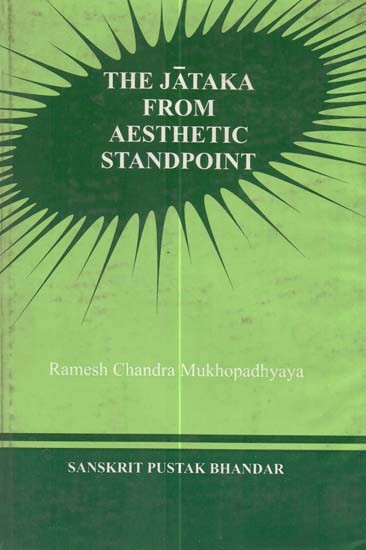
Bìa sách của Ramesh Chandra Mukhopadhyaya
Silence (1)
Silence (2)
Silence (3)
Silence (4)
Silence (5)
Silence (6)
Silence (7)
Tĩnh lặng (8) của Mai Văn Phấn
Ramesh Chandra Mukhopadhyaya chú giải
Phạm Minh Đăng dịch sang tiếng Việt
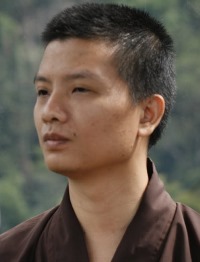
Dịch giả Phạm Minh Đăng
Tĩnh lặng
8.
Tiếng chim, giấc mơ, giọt nước rơi...
Thành đường kẻ dọc
Giọng nói, nỗi buồn, nụ hôn...
Là đường kẻ ngang
Đường kẻ giao nhau
Là đốm sáng
Lúc soi đường
Lúc làm lóa mắt
Tôi tĩnh lặng
Kéo đường kẻ xa nhau.
Chú giải:
Bài thơ bắt đầu với tiếng chim. Chim kêu giống như những giao tiếp không lời của ta vậy – những tiếng thét, những dấu hiệu và tiếng cười. Tiếng chim kêu là dấu chỉ cảm xúc của chim lúc đó. Chúng mở âm cho một khoảnh khắc tâm trạng. Con chim nhắc ta thi nhân hay nhà thơ Mai Văn Phấn. Bài thơ này như là một tiếng chim thần chú không mang tiếng người. Tiếng người là việc sử dụng âm thanh mang tính biểu tượng, được chia sẻ bởi những con người cùng chung một văn hóa nhất định. Tuy nhiên khi một cá nhân mang các kinh nghiệm tâm linh, kẻ đó gặp khó khăn trong việc diễn đạt bản thân bằng một ngôn ngữ mang ý nghĩa. Kẻ đó bộc lộ ra bằng ngôn ngữ không lời tương tự tiếng chim. Nó giản đơn là diễn tả một khoảnh khắc tâm trạng. Nó như thể câu thần chú hay tiếng kinh cầu thuở xưa. Nó không nói hộ quá khứ hay tương lai. Nó mãi mãi là hiện tại. Chim là cá thể mang đến cho ta thông điệp từ bầu trời hay từ cõi hư trống nào chăng. Vậy tiếng chim khiến bầu không khí thanh bình hiển lộ bằng giai điệu như tự thân nó vậy, và tiếng chim chuyển hoá thế giới bất định này thành một thế giới kiến tạo bởi giấc mơ. Và ở đó, hình ảnh và tiếng giọt nước rơi cũng được miêu tả. Giọt nước biểu trưng cho trí tuệ ban xuống từ trời. Giọt nước biểu trưng cho cam lộ sống đời. Giọt nước là thời gian. Là khoảnh khắc hiện tại rơi vào quá khứ thi tính. Là một diễn trình vĩnh cửu của khoảnh khắc.
Tiếng chim, giấc mơ và giọt nước bắt đầu thành hình. Trước đó, nhà thơ nối mình giữa quầng sáng và khoảng tối. Đó là giờ khắc khi ánh sáng và bóng tối giao hoà. Khi các mảnh đối lập đan chen, một cú nổ lớn của năng lượng bùng ra. Và được bảo bọc trong vùng năng lượng tiềm năng đó, nhà thơ cất mình vẽ. Dù nhà thơ không tự mình vẽ (ở đây). Tiếng chim, giấc mơ, giọt nước đã chớp lấy bút của nhà thơ, vẽ bằng năng lượng thẩm thấu và tuyệt đối nguyên sơ của chúng.
Và bức tranh đó như thế nào? Là các đường kẻ dọc - ngang. Có phải các đường ngang biểu trưng cho không gian và đường kẻ dọc biểu trưng cho thời gian? nó sáng lên lấp lánh ở điểm giao cắt, nơi gặp gỡ của thời gian và không gian. Nghệ thuật ngôn từ thường biểu lộ theo trục thời gian và nghệ thuật thị hoạ hình trong không gian. Nhưng nhà thơ đã tạo ra một điều gì đó, vừa hữu hình, vừa hữu thanh. Là một bức tranh không về biển hay về đất. Nơi đây thơ là không gian và hình họa gợi nhắc thời gian. Là thơ với họa hòa làm một. Là không gian nhập lẫn thời gian và tạo ra một năng lượng mạnh mẽ phát sáng. Nhà thơ thấy các đốm sáng này trong thế giới nội tâm mình. Chúng soi đường cho cuộc hành trình nội tâm của ông. Nhưng đôi khi chúng sáng lóa mắt nhà thơ. Những viễn tượng nhà thơ trải nghiệm trong cuộc hành trình đi vào tinh thần ấy.
Nhà thơ tĩnh lại để kéo các đường kẻ dọc – ngang xa nhau để mở ra những hình chữ nhật. Thế giới này, theo đó, có thể được nhìn ngắm trong thanh thản, bình tâm.
Tĩnh lặng (1)
Tĩnh lặng (2)
Tĩnh lặng (3)
Tĩnh lặng (4)
Tĩnh lặng (5)
Tĩnh lặng (6)
Tĩnh lặng (7)
Biography of Dr. Ramesh Chandra Mukhopadhyaya
Address: 6/ 1 Amrita Lal Nath lane P.0. Belur Math Dist Howrah West Bengal India Pin code711202. Date of Birth 11 02 1947. Education M.A [ triple] M Phil Ph D Sutrapitaka tirtha plus degree in homeopathy. He remains a retired teacher of B.B. College, Asansol, India. He has published books in different academic fields including religion, sociology, literature, economics, politics and so on. Most of his books have been written in vernacular i.e. Bengali. Was awarded gold medal by the University of Calcutta for studies in modern Bengali drama.
Tiểu sử Tiến sĩ Ramesh Chandra Mukhopadhyaya
Địa chỉ : 6/ 1 đường Amrita Lal Nath hòm thư Belur Math Dist Howrah Tây Bengal Ấn Độ mã số 711202. Ngày sinh : 11 02 1947. Thạc sĩ văn chương, thạc sĩ triết học, tiến sĩ triết học [bộ ba] cùng với Bằng y học về phép chữa vi lượng đồng cân. Ông còn là một giảng viên đã nghỉ hưu của Trường đại học B.B, Asansol, Ấn Độ. Ông đã có những cuốn sách được xuất bản về nhiều lĩnh vực học thuật bao gồm tôn giáo, xã hội học, văn học, kinh tế, chính trị v.v. Hầu hết sách của ông đã được viết bằng tiếng bản địa là tiếng Bengal. Ông đã được tặng thưởng huy chương vàng của Trường đại học Calcutta về các nghiên cứu nghệ thuật sân khấu Bengal hiện đại.
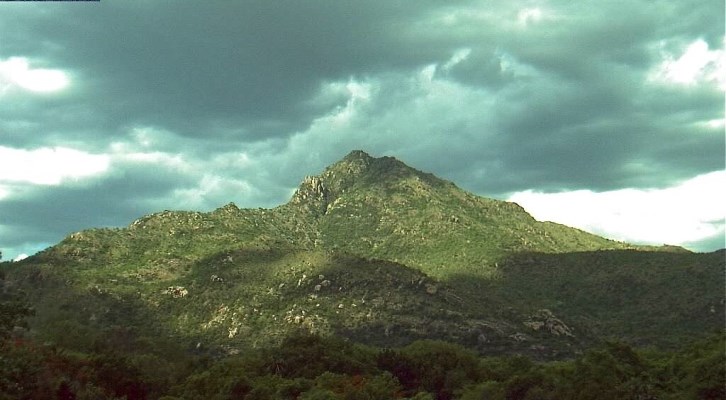
Núi thần quang ở Arunachal Pradesh ấn độ